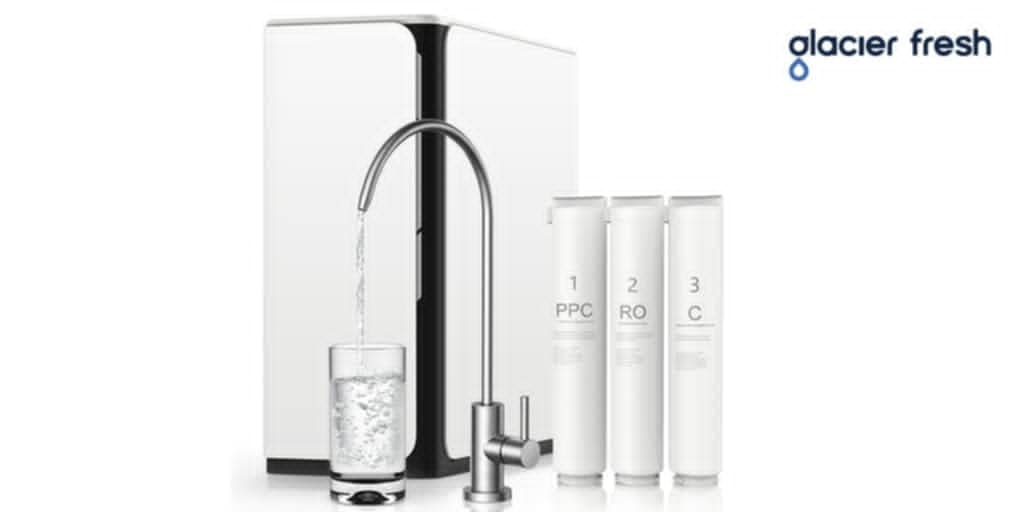Maintenance and Troubleshooting of Reverse Osmosis Systems

Strong 8k brings an ultra-HD IPTV experience to your living room and your pocket.
Introduction
To ensure the optimal performance and longevity of reverse osmosis reverse osmosis water system , regular maintenance is essential. This article provides a comprehensive guide to maintaining and troubleshooting RO systems, covering key maintenance tasks and common issues.
Regular Maintenance Tasks
Replacing Filters
Pre-Filters: Pre-filters should be replaced every 6-12 months to remove larger particles and protect the RO membrane.
Post-Filters: Post-filters, responsible for final polishing of the purified water, should be replaced every 12 months.
Cleaning the RO Membrane
Over time, the RO membrane can become fouled with contaminants, reducing its efficiency. Periodic cleaning or replacement, typically every 2-3 years, is essential to maintain optimal performance.
Sanitizing the System
Regular sanitization of the entire RO system, including the storage tank and tubing, helps prevent bacterial growth and ensures the purity of the water. Sanitization should be performed at least once a year.
Monitoring Water Quality
Testing for Contaminants
Regularly testing the purified water for contaminants ensures the system is functioning correctly. Any significant deviation in water quality may indicate a need for maintenance or filter replacement.
Checking Pressure
Monitoring the pressure levels in the RO system helps identify potential issues. Low pressure can indicate clogged filters or a malfunctioning pump, while high pressure can suggest a problem with the membrane or flow restrictor.
Common Troubleshooting Issues
Low Water Production
Clogged Filters: Replace pre-filters and post-filters to restore normal water flow.
Fouled Membrane: Clean or replace the RO membrane if it is fouled with contaminants.
Poor Water Quality
Expired Filters: Replace filters that have exceeded their recommended lifespan.
Membrane Damage: Inspect and replace the RO membrane if it is damaged or no longer effective.
Leaks
Loose Connections: Check all connections and fittings for tightness and secure any loose parts.
Damaged Components: Inspect the system for damaged components, such as cracked housings or worn-out seals, and replace as needed.
Reducing Plastic Waste
Bottled Water Alternatives
One of the most immediate benefits of using an RO system is the reduction in the need for bottled water. With purified water readily available at home, the dependency on single-use plastic bottles decreases significantly. This reduction helps mitigate the massive environmental issue of plastic pollution, which is detrimental to marine life and ecosystems.
Long-Term Use
RO systems, with proper maintenance, can last for many years, providing a sustainable solution compared to the constant purchase and disposal of plastic water bottles. This longevity means fewer resources are consumed over time, contributing to a more sustainable lifestyle.
Water Conservation
Efficient Water Usage
Modern RO systems are designed to maximize water efficiency. While traditional RO systems were criticized for wasting water, advancements have led to systems that minimize waste, often using a 1:1 or 2:1 ratio of purified water to wastewater. This efficiency is crucial in areas where water conservation is essential.
Recycling Wastewater
Some advanced RO systems come with options to recycle the wastewater produced during the purification process. This wastewater can be used for non-potable purposes such as irrigation, flushing toilets, or cleaning, further conserving valuable water resources.
Energy Efficiency
Low Energy Consumption
RO systems are generally energy-efficient, requiring minimal power to operate. The low energy consumption makes them a viable option for households and businesses looking to reduce their carbon footprint. Newer models continue to improve in energy efficiency, making them even more sustainable.
Solar-Powered RO Systems
In regions with abundant sunlight, solar-powered RO systems are an excellent option. These systems use solar energy to power the filtration process, combining clean water production with renewable energy use, thus significantly reducing environmental impact.
Health and Well-Being
Chemical-Free Purification
RO systems provide a chemical-free method of water purification. Unlike some water treatment methods that rely on chemicals, RO systems use a physical barrier (the membrane) to remove contaminants. This method ensures that no harmful chemicals are introduced into the water, promoting better health and reducing environmental chemical exposure.
Encouraging Sustainable Habits
By providing an on-demand supply of clean water, RO systems encourage individuals and businesses to adopt more sustainable habits. Increased awareness of water quality and the benefits of RO systems can lead to broader adoption of sustainable practices in other areas of life.
Conclusion
Regular maintenance and prompt troubleshooting are crucial for the efficient operation and longevity of reverse osmosis systems. By adhering to a maintenance schedule and addressing common issues, users can ensure their RO systems continue to provide high-quality purified water. Investing time in proper maintenance not only protects the system but also ensures the health and safety of those relying on it for clean water.
Note: IndiBlogHub features both user-submitted and editorial content. We do not verify third-party contributions. Read our Disclaimer and Privacy Policyfor details.


